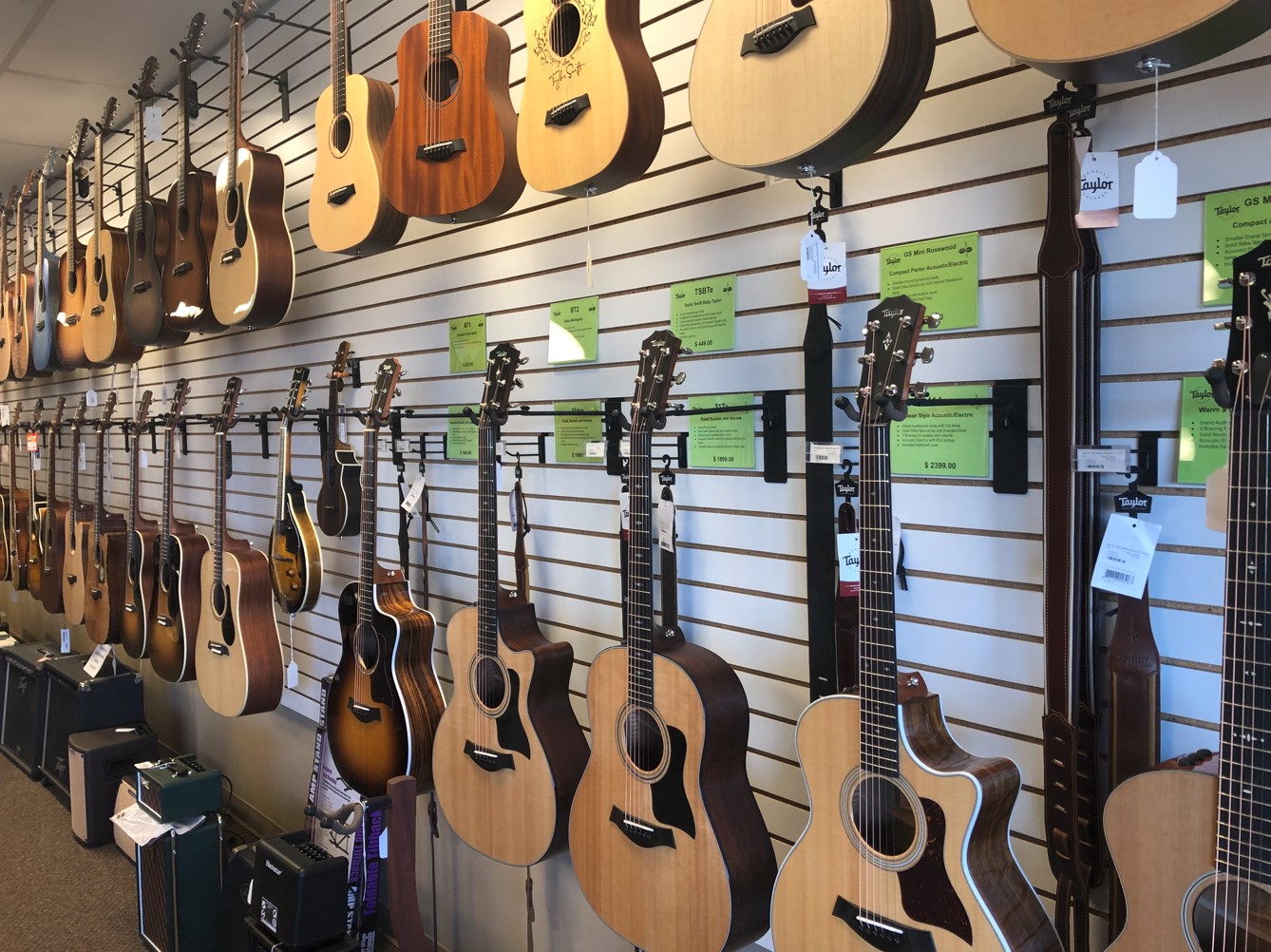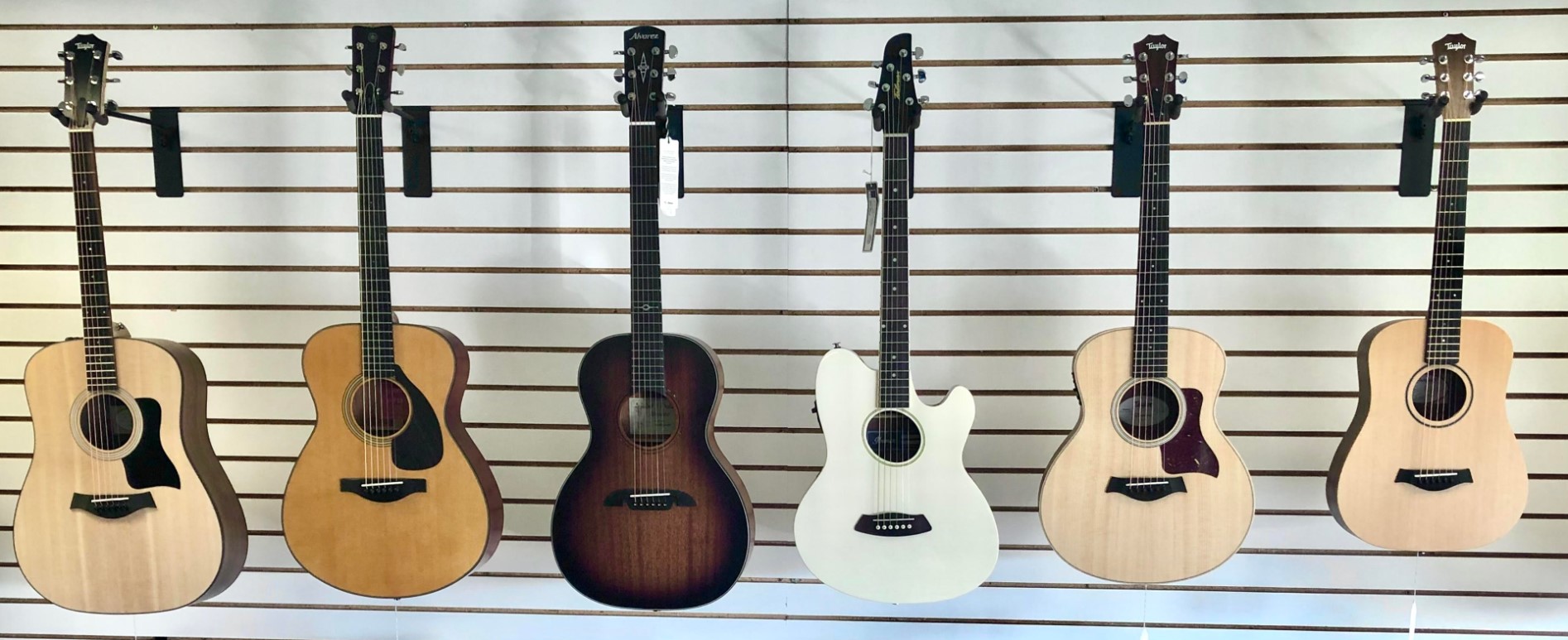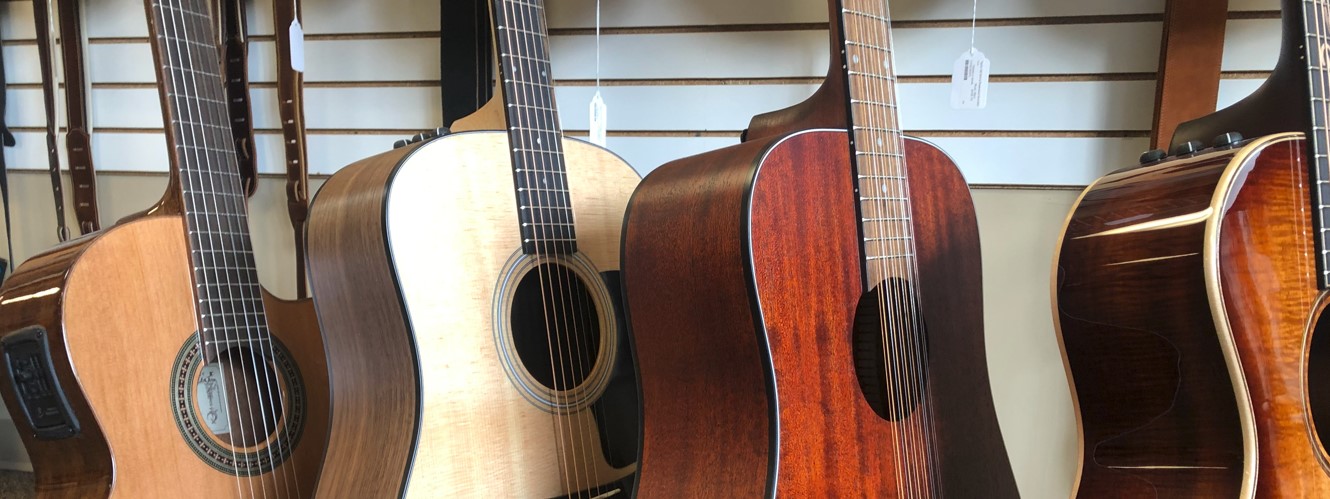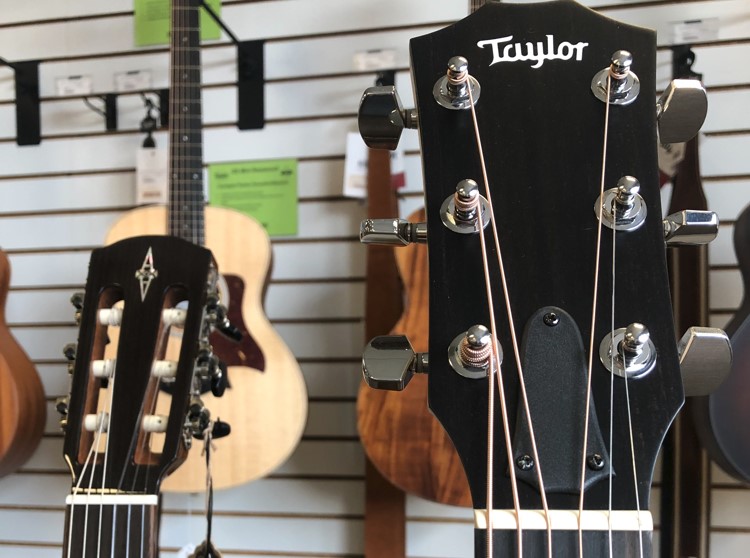Buying Your First Acoustic Guitar
The 7 Things You Need to Know
Almost every day, we have a guitar shopper in the Music Mart looking for their first guitar. They are usually looking for an acoustic guitar but have no idea where to start or what to look for. We’ve put together 7 things you should know and consider when making that initial jump into becoming a rock star (or country star, or punk star, or bluegrass star).
1 - As with most things, you get what you pay for
You probably have a budget and you should be able to find a good starter guitar in most price ranges - even for $100. I recommend sticking with known brands and staying away from the very cheap online guitars for two reasons. First, most of the popular brands are built better and play easier then the less expensive guitars - and if they play easier, learning will be more enjoyable. Second, if you end up REALLY liking guitar playing and want to trade up for a better guitar, a better-built beginner guitar will usually have a higher trade-in value. A lot of people assume they need to be looking for a used guitar to find something affordable, but that isn’t necessarily the case. We will discuss what to look for in a used guitar in #6.
2 - It needs to fit you comfortably
Acoustic guitars have several different body shapes and sizes. Here’s a quick lesson in the parts of a guitar. The body is made up of two sections - the upper bout where the neck attaches, and the lower bout that sits under your arm. The two bouts are separated by the waist. The dreadnought is one of the original shapes with fairly large upper and lower bouts and a very wide waist (it's the guitar on the far left side of the picture above). The dreadnought’s size and shape gives it a loud, full-range when it is played, but can be hard for younger and smaller adults to reach around to play comfortably. Folk-style guitars also have fairly large upper and lower bouts but a narrower waist that is easier to reach around to play. There are also smaller guitars like parlor, travel, ¾ and ½ sizes. Some guitars are also made with narrower bodies. As the guitar bodies get smaller, their sound changes and will usually lose some of the lower end sound. I would suggest finding a store like Music Mart that has a selection of different brands and sizes of guitars to find one that fits your playing and has the sound that you want.
3 - The wood and the way the guitar is built also affects the sound
You are going to find that most guitars have either a solid wood top or a layered (laminated) wood top. Almost all higher-end guitars have a solid wood top - usually spruce, but you will also find cedar, mahogany, and koa. A guitar's sound is created by the strings vibrating and that vibration is transferred to the top that kind of acts like a speaker. Solid wood tops vibrate better than a layered wood top and that creates a better sound with more sustain. So why would anyone want a layered wood top? Two main reasons - they are cheaper to make but they are more rugged than a solid top. The wood in a guitar will expand and contract as the temperature and humidity changes. As temperatures and humidity go up, the wood expands and puts stress on the joints where the top connects to the body and the neck will stretch and curve a bit pulling the strings out of tune. When the temps and humidity fall, the wood shrinks and, if the humidity gets too low, can cause the top to pull apart from the body. Laminated wood tops are less susceptible to the expanding and shrinking, and are a little more rugged if you plan on travelling with your guitar.
4 - Nylon or steel strings
This is a personal preference for you and somewhat determined by the style of music you will want to play. Classical guitars are strung with nylon strings. Some players prefer to learn on these guitars because the strings are easier to press down with less fingertip discomfort for new players. However, the necks on classical guitars are slightly wider than steel string guitars. Classical guitars are generally not played with a pick so the additional space between the strings allows for easier fingerpicking. Steel strings can be tough at the very beginning until you’ve gotten a couple of days of real practice and calluses start forming on your fingertips.
A common question is, can a steel string guitar be strung with nylon strings and can a nylon string guitar be strung with steel strings - the answer is “no”. Guitar necks are built to be under a certain amount of tension based on the strings that it is designed to use. The neck of a classical guitar does not have the strength to withstand the higher tension of steel strings and putting nylon strings on a steel string guitar does not have enough tension to pull the neck into its proper playing position. My personal recommendation is, unless you truly want to learn classical guitar style of playing, get a steel string guitar.
5 - Action and intonation...what does that mean?
These two features are where you will notice the difference between cheap guitars and more expensive guitars. Action refers to how close the strings are from the neck of the guitar. This translates to how hard you need to press the strings to make the chord that you are trying to play. Well-built guitars have a very low action all the way up the neck without strings buzzing on the frets. Lower-quality guitars may have good, low action at the top of the neck near the headstock, but the strings get higher and harder to press as your playing moves up the neck towards the body. Most guitars will have an adjustment mechanism (a truss rod - a little too complicated to cover here) to correct some of the bend in the neck but usually not enough to correct a poorly made guitar.
Intonation is how well the guitar stays in tune as you move up the neck. This is getting into the “information overload” zone, but every note at every fret of a well-built guitar will be in tune. This can easily be checked by playing an open string on the guitar and then pressing down that same string at the 12th fret (usually the one with the 2 dots) and that note should be in tune, too. If it’s not, I would keep looking for another guitar.
6 - Pawn Shop Finds
You can find good deals on used guitars in pawn shops and online on sites like Craig’s List and Reverb. However, when you are shopping for your first guitar, there are a few things to look for that can be easily missed and lead to frustration when you get it home and try to play. Here are some things to inspect it for:
- Look for cracks in the top and body or separation between where the top and back attach to the body
- Make sure that the bridge (the place where the strings are anchored in the top of the guitar) is not lifting from the top of the guitar, there should be no gap between the bridge and the top
- Check all of the tuning machines (the tuners on the head of the neck) and make sure that they turn fairly easily and hold the strings and don’t loosen by themselves
- The biggest issue we see in the store with used guitars are warped necks. A trained eye can look down the neck and see if the fingerboard is warped but you may also be able to tell by playing each string at each fret and if you hear fret buzz that comes and goes as you move your way up the neck towards the body, do not buy it, no matter how good of a deal it may seem.
- Don’t let an older, well-used guitar scare you away, especially if it is a good brand. If it passes the inspection for the previous things I’ve listed, go for it.
7 - The right accessories will help give you a good start
There are some basic add-ons you may want to get while you are in the store buying your guitar. You will probably want picks and a strap to take with you. I also always suggest a clip-on tuner (if the guitar you are looking at doesn’t have one built in) because it’s easy to leave in place on your headstock so you can quickly check to make sure all your strings are tuned to where they need to be.
You will also want some type of case, either a soft gig bag type or a hard case, to protect your guitar when you're not playing and to travel with.
A guitar stand is nice to have to display it but also to have it ready to grab when you have a few minutes to practice.
There are so many websites, YouTube videos and phone apps that can get you started with playing guitar, and I suggest you check them out to find one (or more) that you feel comfortable with their teaching style. We really suggest, however, finding a real live face-to-face teacher for at least a couple of lessons to get you started with correct technique - once you have the basics down, pick an app and run with it.
Check out our guitar inventory for our current selection of acoustic guitars and come in and try some out to find one that fits you.








